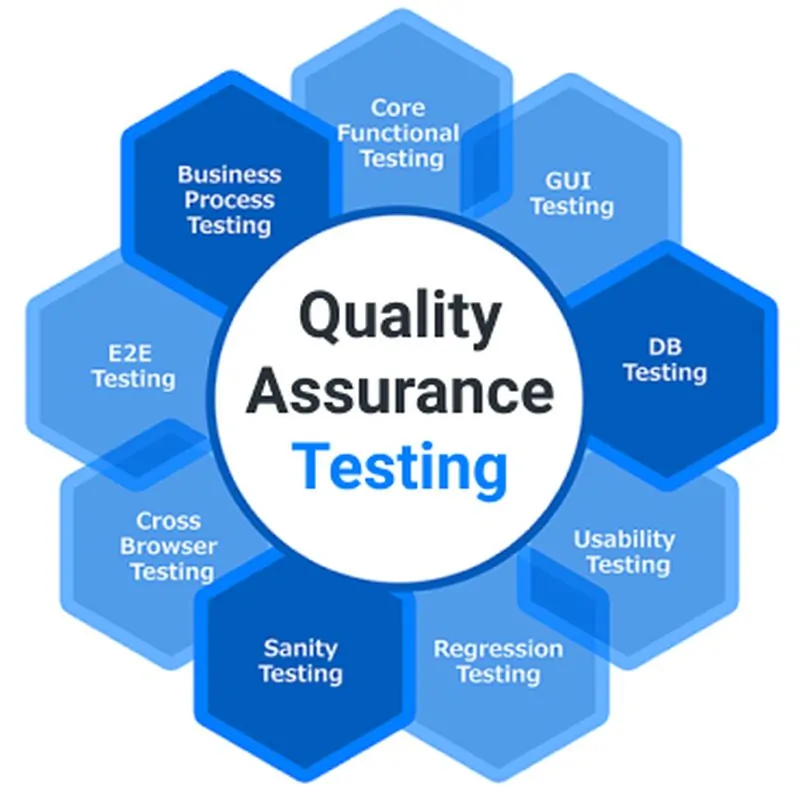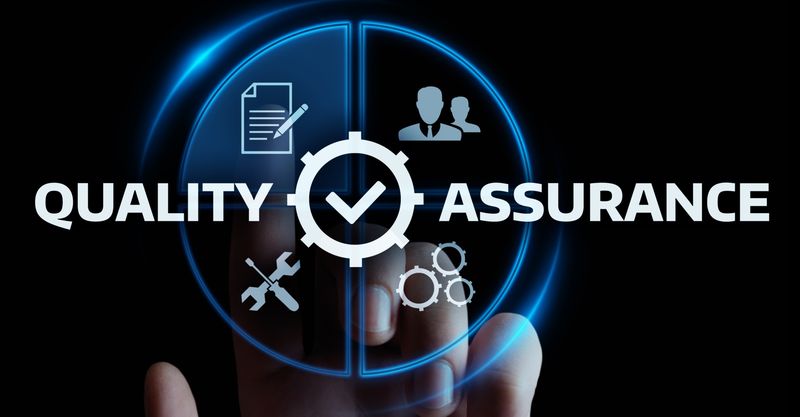Quality Assurance testing is the final step before releasing a product or service to the end-customer. This is the most responsible stage of polishing all imperfections to present something you proud of and can put your name on. Much like working on the compliment of the chef, where the meal has to be close to perfection to impress the audience, QA website testing embodies the same process to amend a software for users.
What is QA Testing?

Quality assurance is real work on quality. QA team is responsible for navigating the development process and prevention of potential issues and bugs. In case something goes wrong, this is what software testing for. QA team works on the identification of bugs, of course, if there are any and reports about the general usability of a software.
If you plan on launching your software or doing it, you should have a clear picture of how website QA and testing work. After all, it defines the level of user experience (UX) and whether a user returns to your website again or chooses a competitor.
How does it work?

Why would a young entrepreneur that gathers a team to develop and launch a service or product would spend resources on a QA team? The first thing to keep in mind is that every team (developers, designers, marketers) have their scope of tasks and focus only on them. The second important detail is the team of developers may not even notice issues that could be obvious for a QA team. The ability to see the same thing under another angle benefits the whole process, especially when it comes to software development. In the end, it is better to prevent potential defects rather than deal with them after the official launch.
To say it plainly, any time you entrust testing to someone who has been working on creating the software, you can’t rely on them to assess the software. Tunnel vision is real, and even the most dedicated developer, manager, and designer will likely make the mistake of not noticing a glaring error in their creation.
However, even a junior software tester will notice discrepancies between design mockups and the final UI of a completed product. Someone whose job is to see mistakes is going to have systems and workflows they follow to ensure a project’s quality. The most basic of these is the PDCA cycle, or simply Plan-Do-Check-Act, where
➢ Plan — stands for planning the process and analyzing results
➢ Do — refers to following the plan
➢ Check — implies to careful monitoring of the process
➢ Act — means taking necessary actions to improve the process
These basic steps are only good if you’re on the lookout for basic mistakes. However, proper testing requires a much deeper understanding of the software, what it’s expected to do, and how it’s expected to work.
Good software testing isn’t a one-time event. It’s a never-ending process, a cornerstone of a project’s success. Even after you have released your software into the world, it is useful to return to it every year to test it again. Your software might have been developed entirely, but no program works in isolation. As operating systems get updated, the software can become incompatible. As the web moves from one version of HTML to another (or as significant browsers slowly phase out things like Java and Flash), your flawless web application can start to fail.
The Real Value of QA and Testing?

Would you drive Tesla’s autopilot before the testing? Probably not. As a consumer, you expect the highest quality and reliability. As a product owner, you need to take care of all processes on your way of building a product to offer the best option on the market and beat the competitors. It is natural to give a car a test drive before putting it on sale.
The same concept works for building an online product of service. If users notice that a product or service doesn’t quite work or find bugs, it leaves a spot on the brand reputation, not to mention negative reviews online. Your potential audience expects perfectly good operating software—that why QA is necessary for a business.
The truth is that QA is a mandatory step for every single type of development. The consequences of broken functionality in an enterprise software suite can cost a business millions of dollars.
Some bugs can be difficult to plan for in advance. The Y2K bug, for example, cost the world $500 billion, but there were few developers (or QA engineers) who were thinking that far ahead when deploying their software.
Other bugs could have been caught. For example, back in 2007, a release of Windows XP caused an error with the activation of licensed versions of the OS. This happened because the release was not tested in a production environment. Fixing the issue only took 30 minutes, but the damage was done, and millions of Windows XP users could not access the full capabilities of their OS for up to 19 hours.
QA is the control of the majority of potential issues; this is the mechanic’s department that tests, polishes, and gives the final feedback. QA and testing are the guarantees that the software works well enough to showcase the end results to the customer(s).
Conclusion

Regardless of the market, you want to succeed. There are always plenty of competitors who are ready to still your potential customers and “seduce” them with a unique proposal, discounts, or undeniable quality. To stand out and win the target audience’s attention over, build the credibility. The only way to do that is to provide quality, which, in turn, can be guaranteed by the QA. Successful entrepreneurs stick to the principle: give the value first, and the audience will follow. Are you ready to apply the same principle?
TestFort is a leading outsourcing company offering full-scale testing and quality assurance services for businesses of different sizes. Since 2001, our team has completed more than 300 testing projects for clients from more than 40 countries and across different industries. If quality matters to you and you need to help with testing your website — or any other product — contact us!



